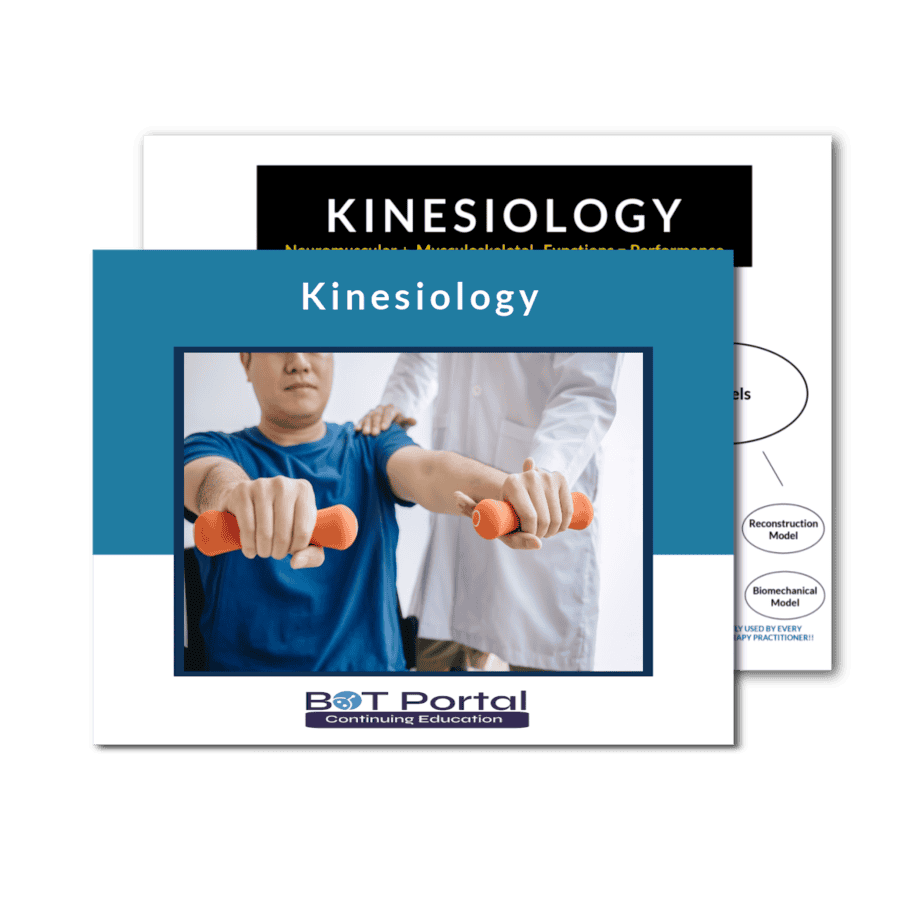Description
Kinesiology
Kinesiology, the study of human movement, is a fundamental aspect of occupational therapy (OT) treatments in rehabilitation. It involves understanding how muscles, bones, joints, and nerves work together to produce movement. This knowledge is essential for occupational therapists as they help individuals recover from injuries, manage chronic conditions, and improve their overall function and quality of life.
Basic Kinesiology Concepts:
- Anatomy of Movement: Kinesiology starts with understanding the body’s anatomy. This includes knowing where muscles, bones, and joints are located and how they interact. For example, the shoulder joint is a complex structure involving multiple muscles and bones, allowing a wide range of motion. Understanding this anatomy helps therapists identify which parts of the body are affected by injury or illness.
- Muscle Function: Muscles are the powerhouses of movement. They contract and relax to move our bones and joints. Kinesiology examines how different muscles work together to produce specific movements. For instance, when you bend your elbow, your bicep muscle contracts while your tricep muscle relaxes. Therapists use this knowledge to design exercises that target specific muscles, helping to restore strength and coordination.
- Joint Mechanics: Joints are where two or more bones meet and allow movement. Kinesiology studies the mechanics of these joints, including how they move and what limits their movement. This is crucial for rehabilitation, as therapists need to understand how to protect injured joints and improve their function without causing further harm.
- Movement Patterns: Everyday activities like walking, reaching, or lifting involve complex movement patterns. Kinesiology helps therapists analyze these patterns to identify abnormalities or inefficiencies. For example, someone with a hip injury might develop a limp to avoid pain. Therapists use kinesiology to correct such patterns, ensuring patients move more efficiently and with less discomfort.
Application in Rehabilitation:
In OT treatments, kinesiology guides the development of personalized rehabilitation programs. For example, after a stroke, a patient may have difficulty using their arm. An occupational therapist uses their knowledge of kinesiology to assess which muscles and movements are affected. They then create a targeted exercise plan to improve strength, flexibility, and coordination in that arm.
Additionally, understanding kinesiology helps therapists teach patients how to perform daily activities safely and efficiently. This might involve showing someone the proper way to lift objects to avoid back strain or adapting a task to accommodate limited mobility.




